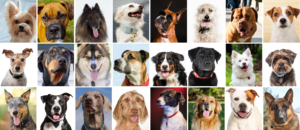To best understand this article in the context of the Breeds and Behavior literature, please see National Canine Research Council’s complete analysis here.
Tonoike, A., Nagasawa, M., Mogi, K., Serpell, J. A., Ohtsuki, H., & Kikusui, T. (2015). Comparison of owner-reported behavioral characteristics among genetically clustered breeds of dog (Canis familiaris). Scientific Reports, 5, 17710. doi: 10.1038/srep17710
This study is included here because it groups breeds by genetic clades, rather than by historical working functions or morphology, and through a dual culture approach, attempts to deal with the confounding effect of environment. The authors explain that technological advancements have made possible breed groupings based on genetic relatedness and posit that such groupings should be the basis for examining the question of breed related behavioral tendencies. This approach is weakened somewhat, however, by work completed since this paper was published which has established more complex relationships between the clades (or breed groups) used here (Parker et al., 2017). To assess differences in behavior, the authors used the popular Canine Behavioral Assessment and Research Questionnaire (C-BARQ). Tonoike, Nagasawa, Mogi, Serpell, Ohtsuki, and Kikusui (2015) acknowledge the risk of bias since the C-BARQ relies on owner reports, but defend its use because they describe it as standardized and as having been validated against dogs with problem behaviors diagnosed by behaviorists and against behavior and performance tests in working dogs. Such validation claims are overstated at best, however. Dogs already identified as expressing behavior their owners or their service dog puppy raisers (e.g., pulling on leash with regard to the service dogs) find problematic are very different from the general population and thus such a validation process is incomplete at best. And it would be surprising indeed if owners bringing their dogs to a professional for help with behaviors the owners considered problematic did not give affirmative responses to survey questions related to those behaviors. Moreover, such a comparison represents only a very small segment of the accepted range of reliability and validity measures expected when evaluating psychometric instruments. A list of just the basic ones would include face validity, test-retest reliability, construct validity, content validity, criterion validity, etc., and nothing like this scope of examination has been done.
Between the U.S. and Japan, surveys for 13,340 dogs met selection criteria (ages 1-7, without chronic health problems). This information, along with breed identification and other demographic information, was collected solely on the basis of this word of mouth online survey, with no verification of any of the information. This is particularly problematic with regard to breed identification, which is widely accepted to be unreliable without pedigree documentation and calls into question any breed-specific findings. The dual culture approach was an attempt to address the confounding effect of environment based on the undemonstrated assumption that husbandry practices and breed biases are sufficiently different in the 2 countries to eliminate environment as a source of breed commonalities. Eight breed groups were created according to vonHoldt et al.’s (2010) and Parker et al.’s (2004) cladograms. The groups were 1) ancient and spitz, 2) toy dogs, 3) spaniels, scent hounds, and poodles, 4) working dogs, 5) small terriers, 6) sight hounds and herding dogs, 7) retrievers, and 8) mastiff-like dogs, collapsing multiples of the clades identified by vonHolt et al. (2010) into single groups.
Tonoike et al. (2015) found that most of the variance for C-BARQ scores correlated to breed groups, country, sex, spay/neuter status, and the source from which the dog was acquired. Because factors deemed associated with attachment were low among the breeds designated as “ancient and spitz,” they concluded that this may be an effect of these breeds (unlike the rest of Canis familiaris) having not crossed an evolutionary Rubicon from diminished fear of humans to actively seeking contact with us in what they propose as a two-part canine domestication process. There are several difficulties with this line of reasoning. First, one of the four questions in the cluster designated as attachment (“becomes agitated when a member of the household shows affection for another person or animal”) is ordinarily associated with resource guarding and typically responds to behavior modification targeting this motivation. It also contradicts their immediately preceding description of diminished fear and increased attachment behavior toward humans, which were traits that evolved simultaneously in foxes in the well-known Russian domestication experiment. Moreover, when other (non-“ancient and spitz”) breed groups scored low on attachment, the authors attribute this to human selection.
The researchers claimed that using two diverse countries allowed them to make “environmental” comparisons in addition to breed groups, sex, age, weight, source, ownership experience, and neuter status. Because the authors found similar breed group differences in behavior in both countries, they argue that breed differences are likely genetic in nature. However, there is no reason to assume that owners in different countries would have differing breed-based expectations influencing their perceptions of their pets’ behavior. Owner biases and perceptions may well span oceans.
https://www.nature.com/articles/srep17710
vonHoldt, B. M., et al. (2010). Genome-wide SNP and haplotype analyses reveal a rich history underlying dog domestication. Nature, 464, (898-902).
Parker, H. G., Kim, L. V., Sutter, N. B., Carlson, S., Lorentzen, T. D., Malek, T. B., … & Kruglyak, L. (2004). Genetic structure of the purebred domestic dog. Science, 304(5674), 1160-1164.
Parker, H. G., Dreger, D. L., Rimbault, M., Davis, B. W., Mullen, A. B., Carpintero-Ramirez, G., & Ostrander, E. A. (2017). Genomic analyses reveal the influence of geographic origin, migration, and hybridization on modern dog breed development. Cell Reports, 19(4), 697-708.
Page last updated July 22, 2019





